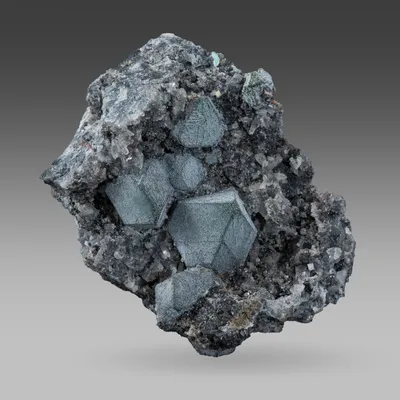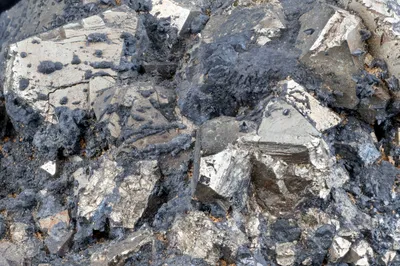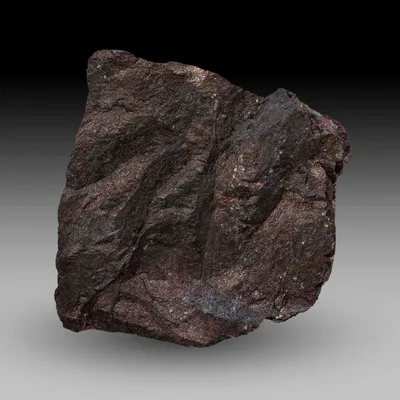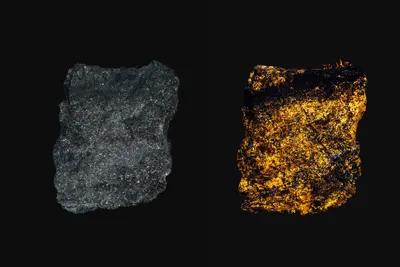Mineral Species
Gallite
Type Locality
Yes
Composition
CuGaS2
Crystal System
Tetragonal
Status at Tsumeb
Confirmed (type locality)
Abundance
Somewhat rare
Distribution
Sulphide ores
Paragenesis
Hypogene
Entry Number
Species; TSNB140
Type Mineralogy
The presence of concentrations of gallium in the Tsumeb ore was recognised in the early 1920s. Shortly after the description of germanite (Pufahl 1922) a paper was published by OMEG chemist F. W. Kriesel noting the presence of gallium (0.74 wt %) in germanite from Tsumeb (Kriesel 1923). Schneiderhöhn (1920c) had noted the presence of an unidentified "grey lamellar" ore mineral in germanium-rich ores, and this same material was described by Moritz (1933), by Ramdohr (1956) and then by Sclar and Geier (1957). Strunz et al. (1958a) determined that this mineral was a sulphide of copper and gallium and assigned it the working name "mineral O". Very similar material from the Kipushi mine in the D. R. Congo was provided by Dr. W. Uytenbogaardt and specimens from the two localities were used to describe the first mineral species containing essential gallium (Strunz et al. 1958b). Gallite was named for its gallium content and enjoys grandfathered status (dated 1958) with the IMA (http://cnmnc.units.it/; accessed January 2023). Kipushi and Tsumeb share type locality status. Type material from Tsumeb is conserved at the Institut für Mineralogie und Kristallographie, Technische Universität, Berlin, Germany.
General Notes
Gallite occurs most commonly as grey metallic inclusions in germanium sulphides (germanite and renierite) and as microscopic exsolution lamellae in sphalerite associated with germanite (Ramdohr 1980; Keller 1977a). Note that these textures are only visible in polished section, by means of reflected light microscopy.
Lombaard et al. (1986) considered gallite a rare mineral which formed relatively early in the hypogene paragenesis (with chalcopyrite, the germanium sulphides and the earliest generation of sphalerite).
Hughes analysed (by microprobe) a sample of gallite from the South 95 Stope, 29/30 Level sill which gave a composition of Cu 35.3 wt %; Ga 32.4 wt %; S 32.9 wt %; Fe 1.4 wt %; Zn 0.1 wt %; Sn 0.04 wt %.
Associated Minerals
brunogeierite; bornite; calvertite; chalcocite; digenite; galena; germanite; germanocolusite; gordaite (?); mawsonite; molybdenite; ovamboite; plumbogummite; pyrite; renierite; söhngeite; sphalerite; stolzite; tennantite-(Zn); tsumgallite






